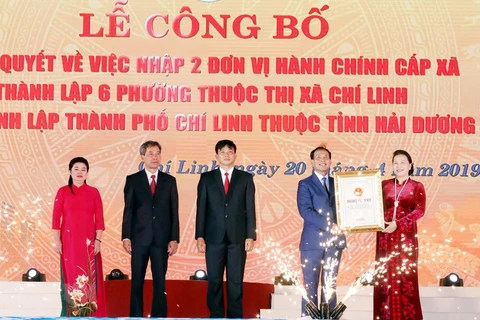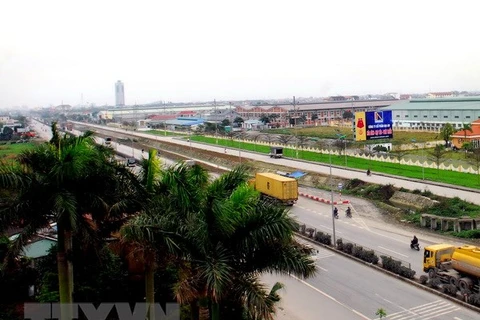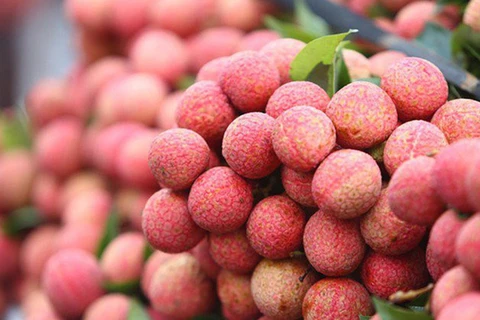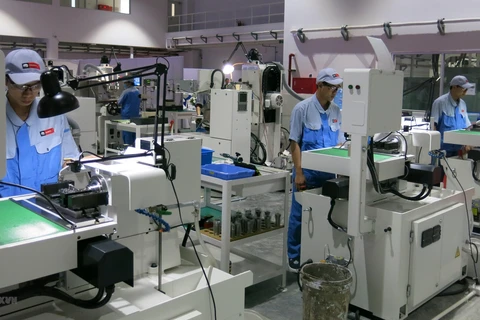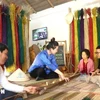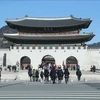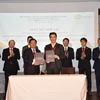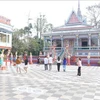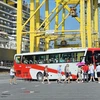Hai Duong (VNA) – With its beautiful landscape together with rich cultural value plus a favourable geographical location and convenient transport system, Hai Duong province aims to turn tourism into an economic spearhead by 2020.
The number of tourists staying overnight in the locality is expected to increase 8 percent this year to reach over 1.6 million in 2020, and the tourism sector will contribute from 2-2.5 percent of the provincial gross domestic product (GDP).
Statistics show that Hai Duong is now home to 200 tourist accommodations, including three 4-star, five 3-star and 25 two-star hotels. As such, those accommodations will not meet future demands.
In addition, there have been no accommodations in the luxurious segment that is forecast to bloom in the next two years.
In the first eight months of 2018, the province welcomed more than 2 million holiday-makers.
Besides holiday makers, Hai Duong has set sight on another source of visitors - local industrial parks which are home to many foreign-invested companies. Foreign direct investment (FDI) in Hai Duong reached 365.8 million USD in the first half of 2018, representing a year-on-year rise of 36.9 percent, the provincial Department of Planning and Investment reported.
The inflow of FDI also brings in both foreign and domestic labourers and experts.
This would stimulate demands for real estate, especially short-term accommodations for foreign experts and labourers.
It is noteworthy that Prime Minister Nguyen Xuan Phuc issued a decision last May, recognizing Hai Duong city as the first-tier city, which has also contributed to spurring the development of the local property market.
Nguyen Duong Thai, Chairman of the provincial People’s Committee, said the recognition will create a great impact on the urbanisation and industrial development in the city and adjacent areas in the province.
It is a major breakthrough creating conditions for Hai Duong city to develop in all spheres, deserving its role as the growth engine of the province and the region at large, he said.
Hai Duong, formerly called “Thanh Dong” – meaning the city to the east of Thang Long royal citadel -, has been well-known for its rich culture, both tangible and intangible, which is typical of the Red River Delta. The province was a cradle of cheo (traditional opera), ca tru (ceremonial singing), chau van (spiritual singing) and water puppetry.
The locality boasts 2,207 historical and cultural relic sites, including 144 ranked as national relic sites and four included in the list of special national relic sites.
Among the four special national relic sites, Con Son-Kiep Bac is arguably the most well-known one. The site is closely associated with the lives and careers of outstanding national hero Tran Hung Dao, the great writer Nguyen Trai, and the great teacher Chu Van An.
Meanwhile, Mao Dien Temple of Literature is the second largest of its kind in Vietnam after the temple in Hanoi. It was built during the early period of the Later Le Dynasty in Vinh Tuy commune, Binh Giang district in the 15th century. It was later moved to Cam Dien commune, Cam Giang during the Tay Son Dynasty (1788 – 1802). The temple is a place where worshippers come to pay homage to Confucius as well as some 600 Confucian doctors of the province that have been honoured over more than 500 years.
Hai Duong is also famous for local specialties such as glutinous rice, lychees, green bean cakes, and gai cakes (glutinous rice cake dyed black with a concoction of pinnate leaves). Local craft villages like Kinh Chu stone carving village, Dong Giao wood carving village, Chau Khe jewelry village, and Cay and Chu Dao ceramic villages also preserve their traditional crafts which have been passed down many generations.-VNA
VNA

